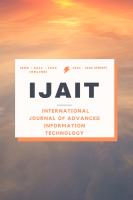Article,
DESIGN AND IMPLEMENTATION OF E-PASSPORT SCHEME USING CRYPTOGRAPHIC ALGORITHM ALONG WITH MULTIMODAL BIOMETRICS TECHNOLOGY
International Journal of Advanced Information Technology (IJAIT), 1 (6): 33-42 (December 2011)
DOI: 10.5121/ijait.2011.1603
Abstract
Advancements in technology have created the possibility of greater assurance of proper travel document ownership, but some concerns regarding security and effectiveness remain unaddressed. Electronic
passports have known a wide and fast deployment all around the world since the International Civil Aviation Organization the world has adopted standards whereby passports can store biometric identifiers. The use of biometrics for identification has the potential to make the lives easier, and the world people live in a safer place. The purpose of biometric passports is to prevent the illegal entry of traveler into a specific country and limit the use of counterfeit documents by more accurate identification of an individual. This
paper analyses the face, fingerprint, palmprint and iris biometric e-passport design. This papers focus on privacy and personal security of bearers of e-passports, the actual security benefit countries obtained by the introduction of e-passports using face, fingerprint, palmprint and iris recognition systems. Researcher analyzed its main cryptographic features; the face fingerprint, palmprint and iris biometrics currently used with e-passports and considered the surrounding procedures. Researcher focused on vulnerabilities since anyone willing to bypass the system would choose the same approach. On the contrary, solely relying on them may pose a risk that did not exist with previous passports and border controls. The paper also provides a security analysis of the e-passport using face fingerprint, palmprint and iris biometric that are intended to provide improved security in protecting biometric information of the e-passport bearer.
